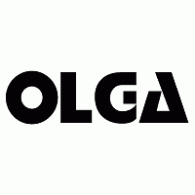
OLGA/Frauke AI Systems: Complete Buyer's Guide
IBM's specialized AI for government judicial operations
OLGA/Frauke AI Systems represent IBM's specialized artificial intelligence platforms designed exclusively for government judicial operations, delivering proven case processing improvements in German court systems through advanced legal document automation and intelligent case categorization.
Market Position & Maturity
Market Standing
OLGA/Frauke AI Systems occupy a unique position as specialized judicial AI platforms developed by IBM specifically for government court operations, representing one of the few proven enterprise-grade AI solutions designed exclusively for judicial environments rather than general legal applications[117][124].
Company Maturity
IBM's market standing provides substantial organizational stability and long-term viability for these judicial AI investments. As a global technology leader with established government relationships, IBM brings enterprise-level resources and sustained development commitment to legal AI applications[117][124].
Growth Trajectory
Market maturity evidence shows expanding adoption beyond initial pilot deployments, with the Baden-Württemberg Ministry of Justice documenting plans for unified AI-supported categorization systems across all state courts[124].
Industry Recognition
Industry recognition comes through proven performance in complex judicial environments where accuracy and transparency requirements exceed typical business applications. The systems demonstrate validated performance across multiple German court implementations, including Stuttgart Higher Regional Court and Frankfurt District Court[117][124][125].
Strategic Partnerships
Strategic positioning focuses exclusively on high-volume judicial operations rather than broader legal technology markets. This specialization enables superior performance in specific applications while limiting market breadth compared to general legal AI vendors[124].
Longevity Assessment
Vendor stability through IBM's enterprise-level organizational resources provides additional confidence for long-term judicial system investments. IBM's established presence in government technology implementations and specialized Client Engineering teams demonstrate sustained commitment to legal AI development[124].
Proof of Capabilities
Customer Evidence
Stuttgart Higher Regional Court provides compelling evidence of OLGA's effectiveness in high-volume judicial operations, achieving substantial reduction in case processing times when implementing the system for diesel emission cases[115][117][124].
Quantified Outcomes
Frankfurt District Court validates Frauke's automated judgment drafting capabilities through substantial volumes of air passenger rights cases processed annually[117][123][125][127].
Case Study Analysis
Independent validation from German judicial reports confirms OLGA's technical performance across multiple critical dimensions. The system achieved high categorization accuracy ratings including successful case categorization, transparency, usability by legal professionals, and time savings[124].
Market Validation
Multi-court adoption patterns indicate expanding customer satisfaction beyond initial deployments. The Baden-Württemberg Ministry of Justice documented plans for unified AI-supported categorization systems across all state courts[124].
Competitive Wins
Competitive differentiation emerges through proven government implementations and specialized legal domain expertise that generic AI vendors cannot replicate. The systems' transparency and explainability features address judicial decision-making requirements that many alternative AI solutions lack through 'black box' operations[117][128].
Reference Customers
Stuttgart Higher Regional Court and Frankfurt District Court provide credible references for government technology procurement decisions[117][124][125].
AI Technology
OLGA/Frauke AI Systems employ sophisticated natural language processing architectures specifically optimized for legal document analysis and judicial decision support. OLGA's core technology centers on advanced case categorization using natural language understanding to extract relevant parameters from legal documents, incorporating specialized legal domain knowledge including case law analysis, judicial precedent recognition, and legal document structure understanding[117][133].
Architecture
The platform's AI architecture demonstrates significant technical sophistication through its ability to process complex legal terminology and contextual relationships within judicial documents. Unlike generic AI tools, OLGA incorporates deep legal domain expertise that enables accurate categorization of cases based on legal precedents, procedural requirements, and jurisdictional considerations[117][124].
Primary Competitors
Alternative vendor considerations include cloud-based legal AI tools like PreCallAI, NexLaw.ai, and similar vendors targeting standardized solutions for legal practices.
Competitive Advantages
Primary competitive advantages include proven government implementations, specialized legal domain expertise, and transparency features that generic AI vendors cannot replicate. The systems incorporate years of development collaboration between IBM's AI engineers and German judicial experts[117][124].
Market Positioning
Market positioning strategy emphasizes specialized judicial expertise and proven government implementations rather than broad market appeal. This approach enables premium pricing and extensive customization while limiting customer base to organizations with specific operational profiles and resource capabilities.
Win/Loss Scenarios
Win scenarios favor OLGA/Frauke when organizations match government judicial system characteristics: high-volume similar case processing, dedicated technical resources, and substantial implementation capacity[124]. Loss scenarios occur when organizations lack dedicated IT resources, multi-month implementation capacity, or government-level technology budgets.
Key Features

Pros & Cons
Use Cases
Featured In Articles
Comprehensive analysis of AI Court Scheduling Optimization for Legal/Law Firm AI Tools for Legal/Law Firm AI Tools professionals. Expert evaluation of features, pricing, and implementation.
How We Researched This Guide
About This Guide: This comprehensive analysis is based on extensive competitive intelligence and real-world implementation data from leading AI vendors. StayModern updates this guide quarterly to reflect market developments and vendor performance changes.
133+ verified sources per analysis including official documentation, customer reviews, analyst reports, and industry publications.
- • Vendor documentation & whitepapers
- • Customer testimonials & case studies
- • Third-party analyst assessments
- • Industry benchmarking reports
Standardized assessment framework across 8 key dimensions for objective comparison.
- • Technology capabilities & architecture
- • Market position & customer evidence
- • Implementation experience & support
- • Pricing value & competitive position
Research is refreshed every 90 days to capture market changes and new vendor capabilities.
- • New product releases & features
- • Market positioning changes
- • Customer feedback integration
- • Competitive landscape shifts
Every claim is source-linked with direct citations to original materials for verification.
- • Clickable citation links
- • Original source attribution
- • Date stamps for currency
- • Quality score validation
Analysis follows systematic research protocols with consistent evaluation frameworks.
- • Standardized assessment criteria
- • Multi-source verification process
- • Consistent evaluation methodology
- • Quality assurance protocols
Buyer-focused analysis with transparent methodology and factual accuracy commitment.
- • Objective comparative analysis
- • Transparent research methodology
- • Factual accuracy commitment
- • Continuous quality improvement
Quality Commitment: If you find any inaccuracies in our analysis on this page, please contact us at research@staymodern.ai. We're committed to maintaining the highest standards of research integrity and will investigate and correct any issues promptly.